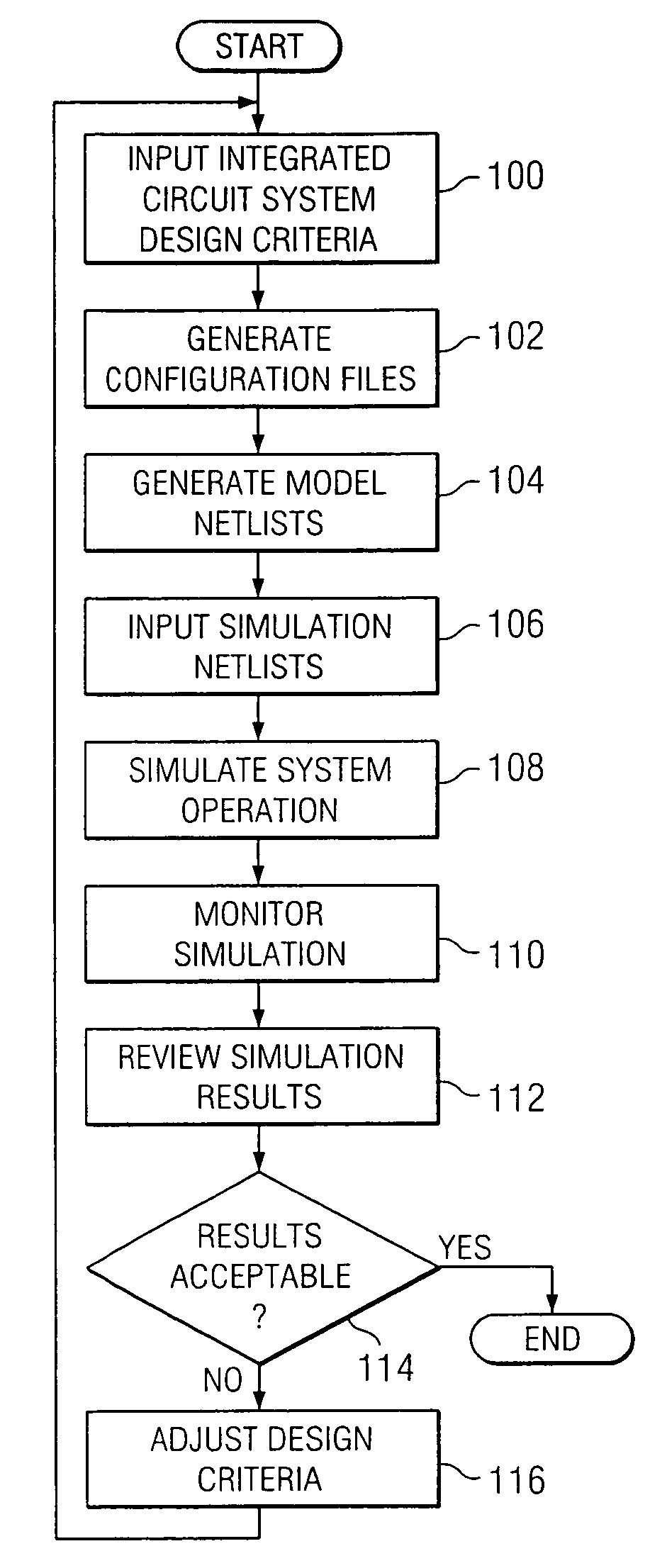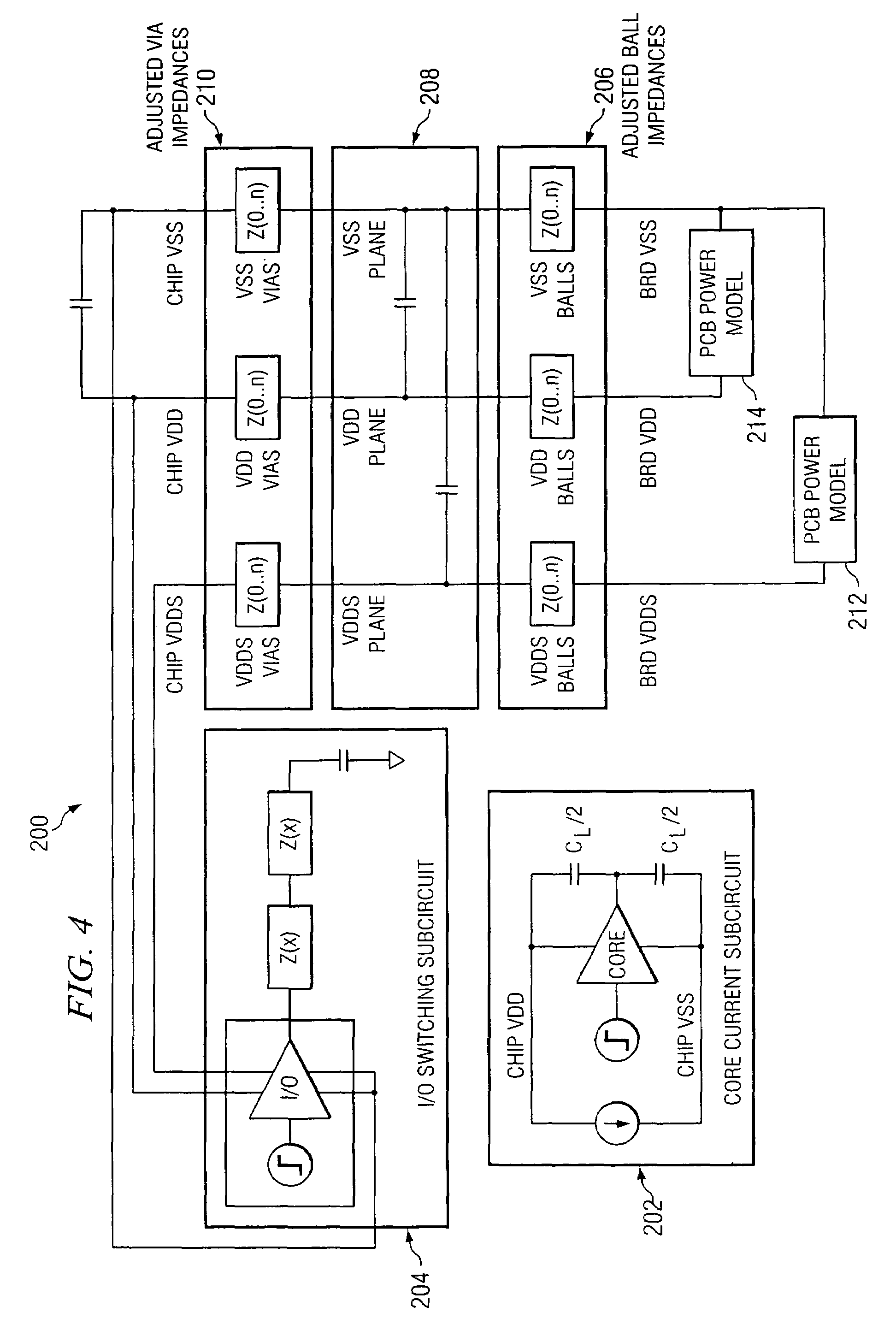System and method for modeling an integrated circuit system
a modeling system and integrated circuit technology, applied in the field of semiconductor devices, can solve problems such as inability to make predictions about circuit elements fabricated using a different process, inability to meet the efficiency and accuracy of known modeling methods, and inability to model circuit elements. to achieve the effect of reducing disadvantages or greatly reducing problems
- Summary
- Abstract
- Description
- Claims
- Application Information
AI Technical Summary
Benefits of technology
Problems solved by technology
Method used
Image
Examples
Embodiment Construction
[0019]An embodiment of the present invention and its advantages are best understood by referring to FIGS. 1-4 of the drawings, like numerals being used for like and corresponding parts of the various drawings.
[0020]FIG. 1 illustrates a method for modeling a system that includes a microchip, a package and a printed circuit board (PCB). The method of FIG. 1 may be used to analyze the electrical characteristics of power switching noise associated with a particular design, for example a multimillion-gate design, on the package and PCB. The modeling and simulation can be done at the architectural stage of the design to enable designers to consider tradeoffs (e.g., cost versus performance) of different package configurations. The electrical analysis may be used to determine instantaneous IR and L di / dt drop that is anticipated at the chip power connections through the package and printed circuit board. In Mixed Signal designs, the frequency and magnitude of the instantaneous voltage drop ...
PUM
 Login to View More
Login to View More Abstract
Description
Claims
Application Information
 Login to View More
Login to View More - R&D
- Intellectual Property
- Life Sciences
- Materials
- Tech Scout
- Unparalleled Data Quality
- Higher Quality Content
- 60% Fewer Hallucinations
Browse by: Latest US Patents, China's latest patents, Technical Efficacy Thesaurus, Application Domain, Technology Topic, Popular Technical Reports.
© 2025 PatSnap. All rights reserved.Legal|Privacy policy|Modern Slavery Act Transparency Statement|Sitemap|About US| Contact US: help@patsnap.com



